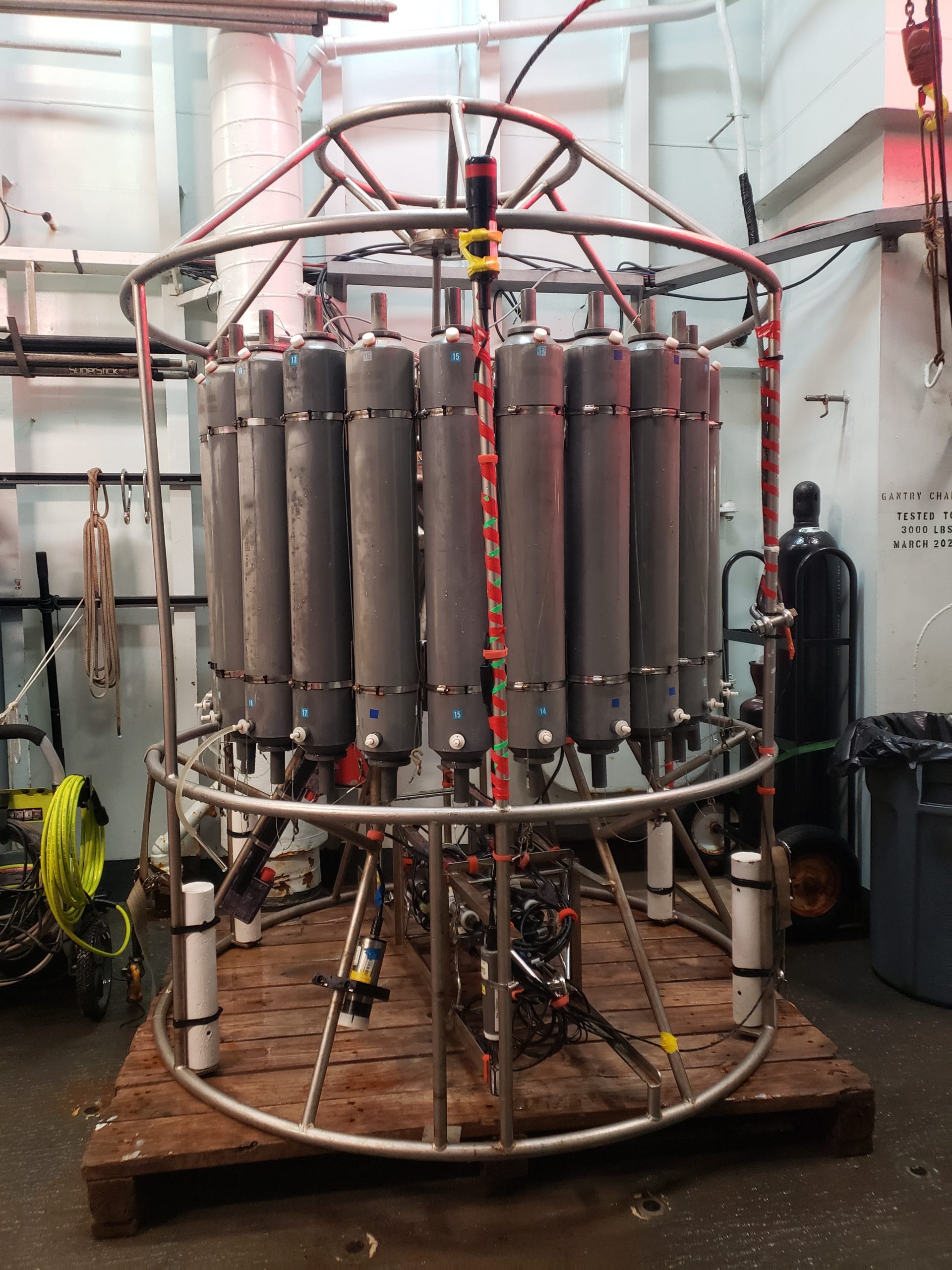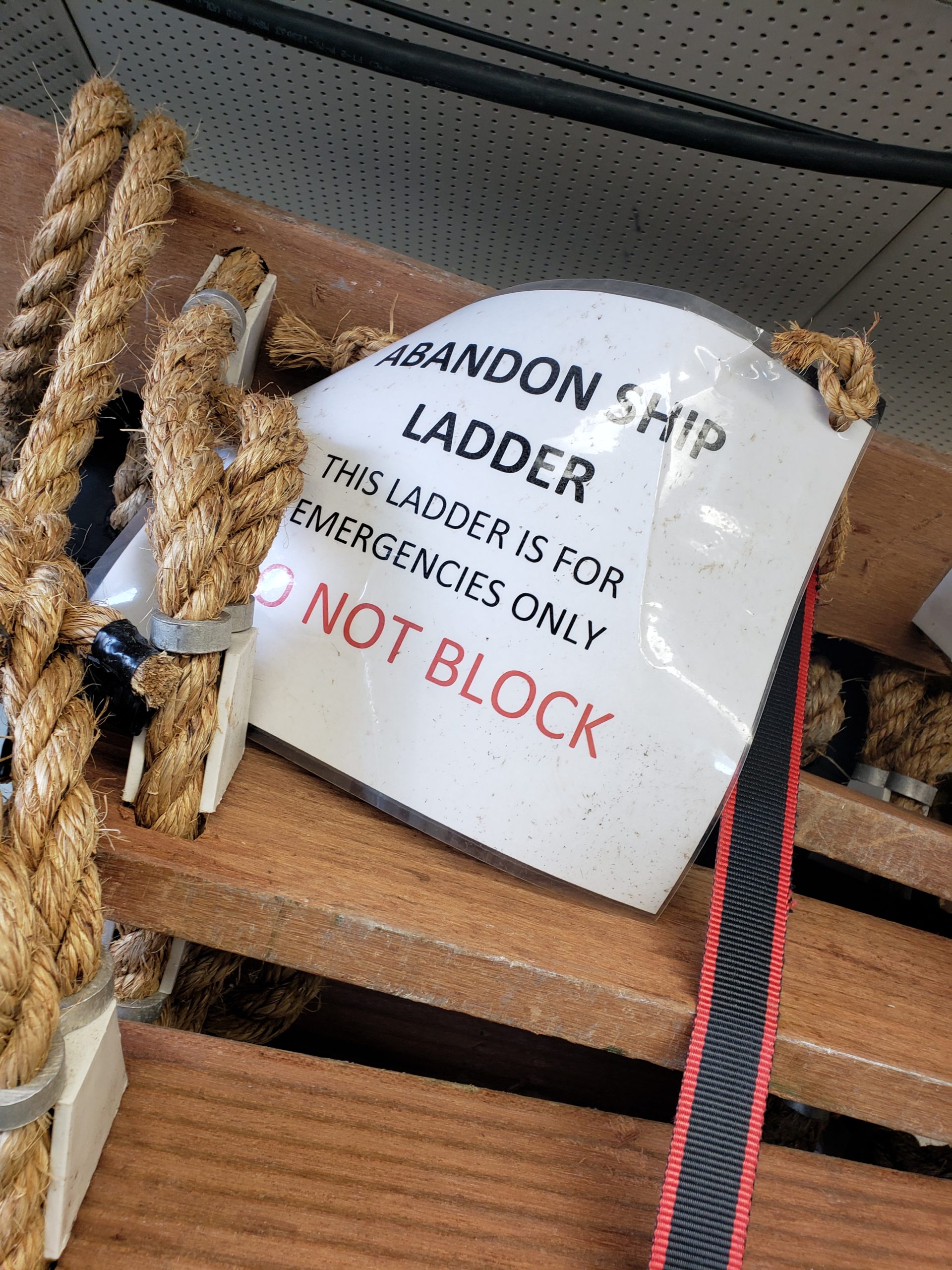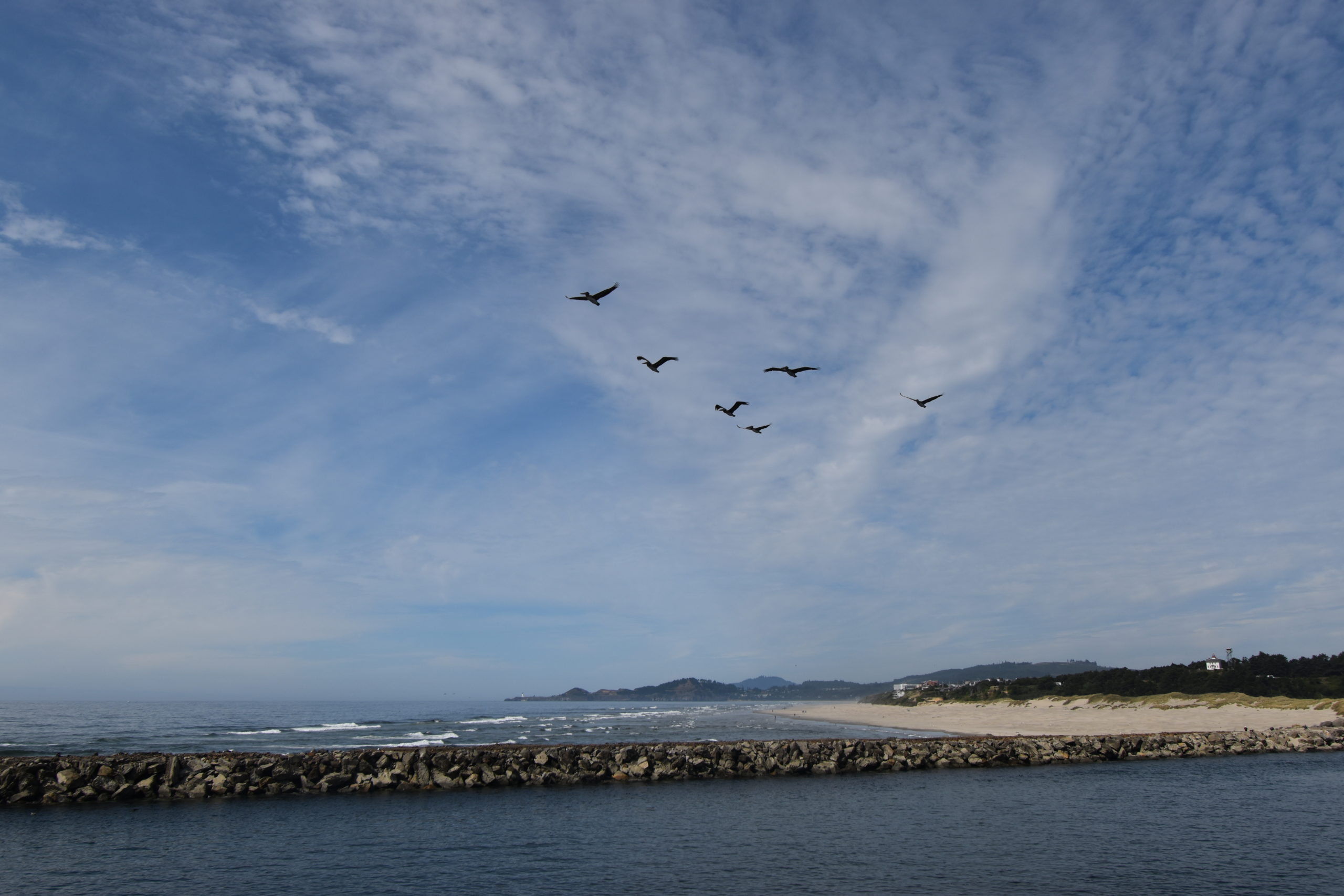Image Archive





























My small paining kit in the darkness of the Jason contol van. Credit: C. Gill, University of Washington, V21.

A nursery of yellow Neptunea stalks hosting egg casings and abundant orange anemones near Pythias Oasis. Credit: D. Kelley, UW/NSF/WHOI, V21.

The R/ V Thompson transiting at the start of Leg 4. Credit: C. Gill, University of Washington, V21.

Beautiful watercolor of the Yaquina Bay estuary. Credit: C. Gill, University of Washington. V21

A lava flow seen through the eyes of C. Gill. Credit: C. Gill, University of Washington, V21.

Look at all these buttons! It’s like some kind of crazy arcade game. And this was only one panel! D. Paterson, University of Washington, V21

Last but not least for today: the engine room! The Thompson has 4 engines in it, and they’re all expectedly quite loud. The tour was awesome! D. Paterson, University of Washington, V21

Next up: titration! The samples we practiced on were distilled water, to get a feel for how the process works, and to calibrate the machine to get ready for the water samples. When starch is added to the iodine, it turns blue – the oxygen concentrations are noted and when that blue then turns clear after the addition of another chemical. It’s easier to see when blue turns clear, as opposed to a pale yellow. D. Paterson, University of Washington, V21

One of the various bottles used for the collection of water, that will later be processed and analyzed for a particular component of interest. It looks suspiciously like a beer bottle, doesn’t it? … do not drink! D. Paterson, University of Washington, V21

The device that collected the CTDs. Each cannister is filled with waters from varying depths that can be used for follow-on analyses. D. Paterson, University of Washington, V21

Sailing into the unknown! -- well, not really, but you get a certain feeling when you realize the horizon all around you looks exactly the same – not a speck of land in sight. D. Paterson, University of Washington, V21.

It kind-of looks like cord spaghetti. Cords with 3000v of electricity being fed into them. 0/10 would not recommend eating. D. Paterson, University of Washington, V21.

The outside of Jason. Note: the basket that looks suspiciously like a milk carton crate. It can be fitted with all sorts of instruments for a variety of tasks! D. Paterson, University of Washington, V21.

We were told the record time for putting one on was about 2 minutes – let me tell you, the hardest part about putting them on is taking them off later. I’m sure it gets easier with practice. D. Paterson, University of Washington, V21.

The ‘board of lies’ – a great place to check throughout the day, as it has a general outline of things to come and when. I’m told it’s called the ‘board o’ lies’ because, generally speaking, things don’t tend to always follow the schedule – always prepare the unexpected! D. Paterson, University of Washington, V21

We’re going on an adventure! D. Paterson, University of Washington, V21.

I have to admit, it was pretty cool to see a Mario Kart tournament sign up sheet, and not one, but TWO consoles hooked up to play the game. Like, the people – the team and the crew – are real people too, not just scientists always poking things and doing research in lab coats and goggles – real shocker! D. Paterson, University of Washington, V21.

Safety is important! I imagine I’ll be learning more about it tomorrow morning during the safety meeting. We shouldn’t ever have to use this, in theory, but it’s good to know where it is! Credit: D. Paterson, University of Washington, V21.

Check out this sweet set-up – I like to call it my “cockpit” – though I highly doubt the internet will function down here once we get out to sea. It was fine tonight – even for a voice chat and a few games! The bed is way comfier than I thought it was going to be! I just hit my head on the ceiling several times … Credit: D. Paterson, University of Washington, V21.

Last views of Newport as we leave port. Credit: R. Manoharan, University of Washington, V21.

View of my cabin after I finished moving in. Credit: R. Manoharan, University of Washington, V21.

The exciting world of the Jason Control Center during an ongoing dive Credit: R. Manoharan, University of Washington, V21.

Leg 4 VISIONS'21 students and participants look out to sea as the R/V Thompson heads towards the Newport bridge. Credit: M. Elend, University of Washington, V.21

Katie Gonzalez, recent graduate from the UW Oceanography undergrad, takes an oxygen sample from the CTD rosette at Endurance Oregon Offshore. Credit: K. Bigham, University of Washington, V.21

A flock of pelicans tag along the ship as we leave Newport, OR. Credit: M. Elend, University of Washington, V.21

The R/V Thompson exits the Yaquina channel into the Pacific at the start of Leg 3. Credit: M. Elend, University of Washington, V.21

The Slope Base Deep Profiler Mooring comes aboard the R/V Thompson. Credit: M. Elend, University of Washington, V21.

Near Pythias Oasis, a large, and very old crab, encrusted by anemones, wanders a garden of Neptunea snails and their egg casings, with the seafloor littered by orange anemones. Credit: D. Kelley, UW/NSF/ WHOI, V21.
- Anemone
- Animal
- Arthropod
- ASHES
- Axial
- Axial Base
- Axial Biology
- Axial Caldera
- Bacteria
- Basalt Lava
- BEP
- Biofouling
- biolgoy
- Biology
- Camds
- Camera
- Camhd
- Central Caldera
- Ciliates
- Cnidaria
- Coastal Biology
- Crab
- Deep Profiler Mooring
- Dive Highlights
- Eastern Caldera
- Echinoderms
- Endurance Array
- Engineering Team
- ENLIGHTEN 10
- Exploratorium
- Fish
- Geology
- HD Camera
- HPIES
- Hydrate Ridge
- Hydrates
- Hydrophone
- Hydrothermal Vents
- Illustration
- Inshore 80 Meters
- Instrument
- International District
- J-BOX
- Jason
- Jellyfish
- Junction Box
- K12
- Lava
- Mollusk
- Moorings
- Nodes
- Nudibranch
- Octopus
- OOI
- Oregon Offshore
- Oregon Offshore 600 m
- Oregon Shelf
- Oregon Slope Base
- People
- PN1B
- PN1D
- Polychaetes
- PPSDN
- Primary Node
- RASFL
- ROCLS
- ROPOS
- ROPOS Dives
- ROV Team
- RV Revelle
- RV Sikuliaq
- RV Thompson
- Salp
- Sample
- SC13
- Science Team
- Sea Cucumber
- Sea Star
- Sea Urchin
- Seafloor
- Seismometer
- Sensors
- Shallow Profiler Mooring
- Shark
- Shipboard
- Shore Station
- Slope Base
- Smoker
- Soft Coral
- Southern Hydrate Ridge
- Sponge
- Squid
- Students
- Students & Guest Participants
- Tmpsf
- Tubeworms
- VISIONS 11 Leg 1
- VISIONS 11 Leg 2
- VISIONS 11 Viewers
- VISIONS 13
- VISIONS 14
- VISIONS 15
- VISIONS 16
- VISIONS 17
- VISIONS 18
- VISIONS 20
- VISIONS 22
- VISIONS 23
- Visualization
